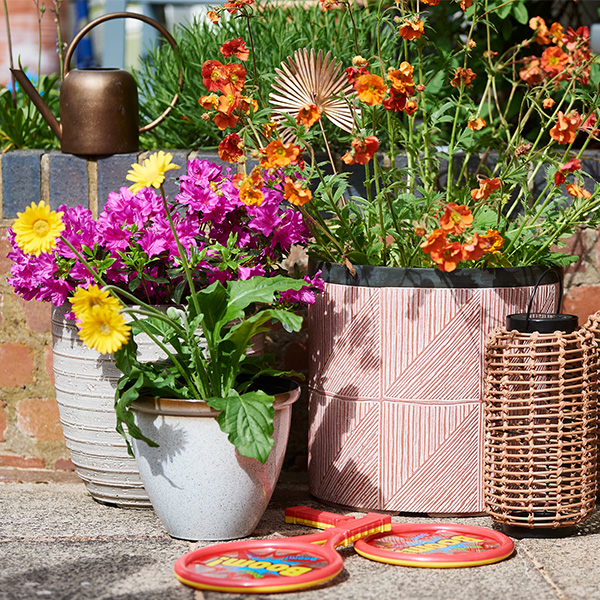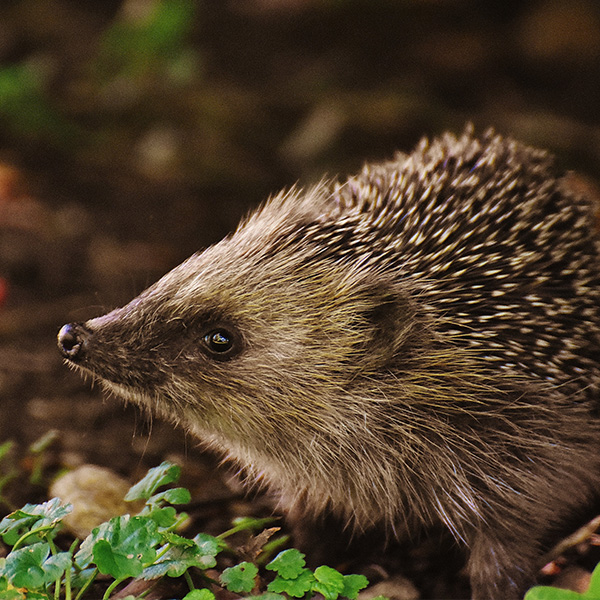5 ways to attract wildlife to your garden
Attracting wildlife into your garden can have long lasting benefits, both for the animals and your garden!
These pest-controllers and perfect pollinators are the natural way to keep your garden safe from pests, giving you the best chance at a bountiful growing season.
If you’re having problems with invasive insects, your crops are getting scoffed by slugs and snails, or your outside space just needs a bit of cheering up, here’s how to create your very own wildlife-friendly garden and restore some balance!
 By Alex
By Alex- 23rd Jan 2024
- 6min read
- This blog was updated on 19th Aug 2025
1. Feed the birds
Inviting wild birds into the garden isn’t just for their beautiful birdsong and dazzling variety; did you know that wild birds can help keep your plants safe from insect pests?
Our wild bird population is vital for controlling the population of destructive insects like aphids, flies, and beetles. If they didn’t, it wouldn’t just be your lettuces that would suffer – if unchecked by birds, these insects would be capable of wiping out whole forests!
We reckon we should thank our feathered friends for their service by inviting them into our gardens. Leaving out a variety of quality wild bird food will entice them in, where they’ll happily keep an eye on pesky insects for you.
When positioning your bird feeder, hang it in a safe place which is out of reach of cats, and keep it clean and topped up with tasty seeds. You’ll find native birds are fond of different foods, so try a wild bird seed mix to see what turns up!
Wild birds will appreciate food all year round. In winter, when natural food is scarce, they love suet fat balls alongside their standard feed.
If you’ve nowhere to hang a feeder, try a freestanding bird table which also doubles up as a lovely feature for your outside space.
2. Plant flowers for pollinators
There are approximately 1.4 billion insects for every person on earth. Thankfully, not all of them want to eat your lettuces.
Flowers are the quintessential garden plant, bringing colour and vibrancy to our outside spaces. However, their purpose isn’t just to look pretty – though they are very good at that.
By planting a variety of native flowers in the garden, you’re doing your bit to attract wildlife like ladybirds, lacewings, and hoverflies. If there’s one thing these beneficial bugs love more than wildflowers, it’s eating aphids. In your battle against pests, these guys are your best friends, so plant all you can to attract them into your garden and they’ll do the work for you!
Most plants in your garden rely on pollination to grow and bear fruit. Everything from tomato plants, beans and cucumbers wouldn’t provide their delicious harvests if it weren’t for the hardest-working insect there is: bees!
Attracting pollinators like bees & butterflies into your garden with irresistible flowers will make sure your crops are given the best chance of success and bring your garden to life. Don’t forget to have something available for them throughout the seasons, not just summer.
Pollen-rich flowers like calendulas, nasturtiums, wildflower mixes and spring-autumn bulbs are loved by bees and bugs alike!
You can make your garden even more inviting by giving these insects a place to stay: installing an insect house gives solitary bees and other brilliant bugs a place to stay safe. It's also a great way to get the kids involved & learn about the world of insects!

3. Embrace some chaos!
Nature doesn’t worry about keeping things orderly.
A wild meadow isn’t neatly organised into straight lines, nor are the trees in a forest identical shapes. You can create a wildlife-friendly garden quite easily by doing nothing.
• Leave some weeds
The idea of a ‘weed’ being a negative thing is mostly a human invention. Whereas you don’t want weeds battling against your crops, letting some grow in other areas can do your garden some good by attracting pollinators like bees, as most weeds are native plants.
Next time you see a plant growing between paving slabs or next to the compost bin, let it thrive and see what happens!
• Mow the lawn less often
Don’t reach for the lawnmower just yet! By leaving your grass to grow out, you’ll encourage wildlife to visit by providing a natural habitat for beneficial bugs and pollinators. Try leaving it longer between mows for maximum benefit, and don’t be tempted to cut the grass too short.
• Create a haven with dead wood
Save any dead branches or bark from trees and make a pile in a sheltered corner. Helpful bugs will set up camp there and ward off pests on your behalf - or you can make things a little prettier with an insect house.
• Pick a chaos corner
We understand you probably won’t want to let your whole garden become overrun, which is why we’d suggest choosing a secluded area of your garden to simply ignore! Let nature do its thing, let the weeds flourish, the leaves settle, and the wildlife prosper!
4. Look out for hedgehogs
Slugs and snails can be a nightmare in the growing season as they will happily munch away on seedlings and salad leaves.
Don’t immediately be tempted by pellets and chemicals. Whilst these may do the job, they can be harmful to plants, soil, and helpful wildlife like worms and birds.
Instead, you can enlist the help of your friendly neighbourhood hedgehogs. Invite them in with our hedgehog food and they’ll happily stick around for a second course of slugs – they love them!
The hedgehog population isn’t doing too great in the UK, so it’s up to us to help them out. Consider working with your neighbours to cut hedgehog-sized tunnels in adjoining fences so they don’t get stuck in urban gardens, and always check piles of dead leaves or grass before removing or mowing the lawn - there could be a sleepy hog in there.
Having a hedgehog around is a great way to make sure your seedlings aren’t decimated by slugs and snails, giving you one less thing to worry about during the growing season.
They’re also adorable.

5. Create a water source
Having a pond or other kind of water source is a haven for all wildlife in your garden including beneficial bugs and birds as well as frogs and toads, who are a free and natural pest control against slugs and snails!
If you don’t have room for a pond, leaving out a shallow container like a plant pot saucer is a great value alternative. As well as providing drinking and bathing water for birds, you can help butterflies and other pollinators by filling your tray with rocks for them to perch on and drink safely.
Even including a stylish water feature will give the birds something to drink and bathe in, making this elegant garden decoration even more entertaining and beneficial.

Be at one with your garden ecosystem and restore balance to your outside space by creating a wildlife-friendly garden.
Stay tuned for more great garden ideas coming soon on our Ideas & Advice hub.
If you’ve got pictures of the wildlife in your garden, we’d love to see them! Feel free to get in touch with us on Facebook, Instagram or X or TikTok.